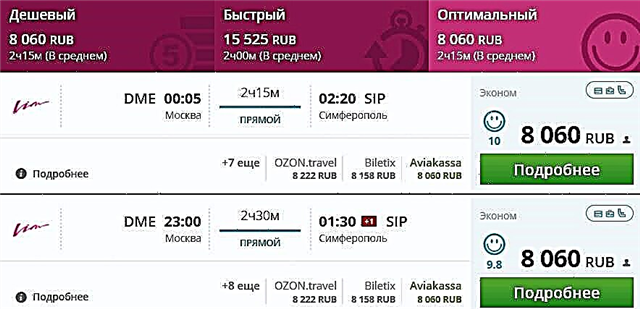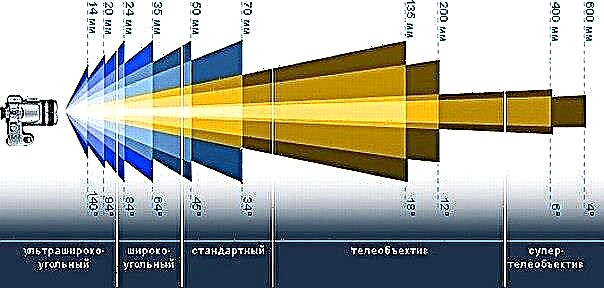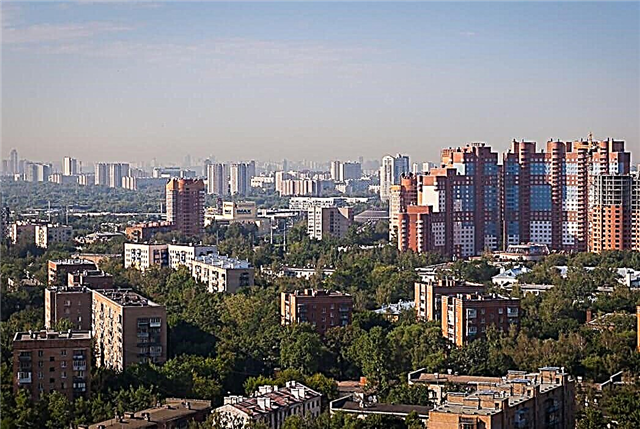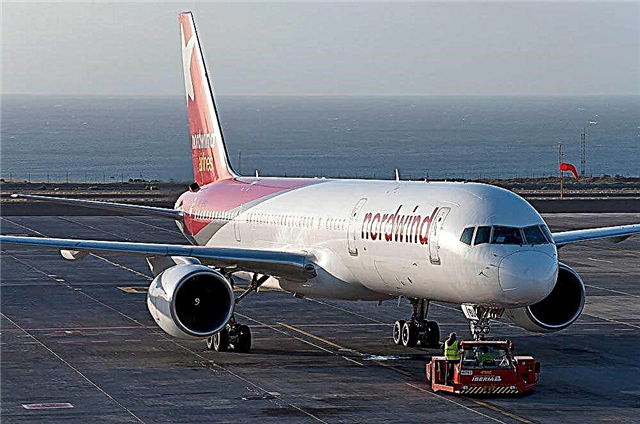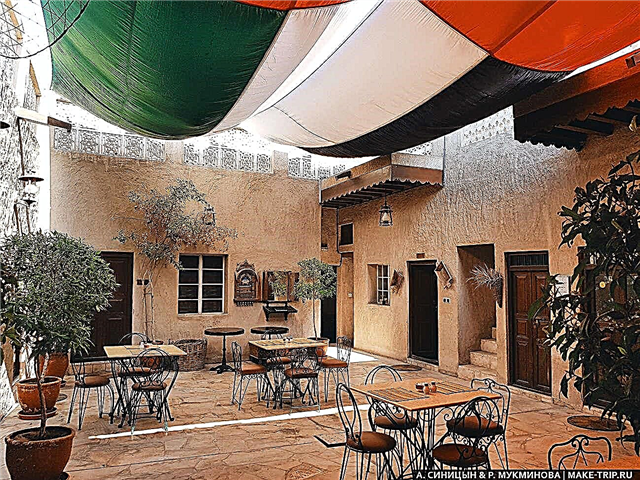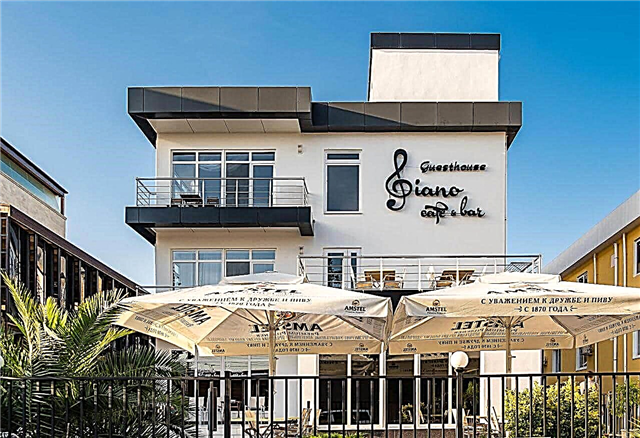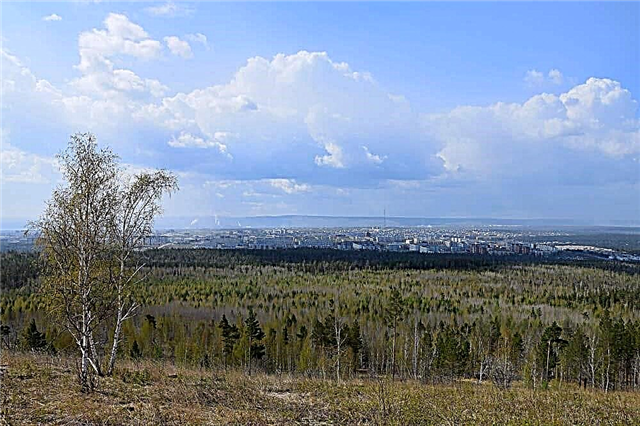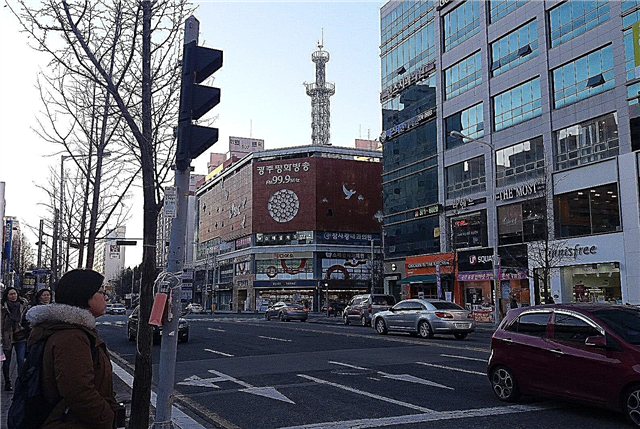South Korea is an average country in terms of area in terms of world indicators, but its main cities are quite large. More than 10 million people live in the capital Seoul. And there are ten more cities with a population of one million, which continue to develop intensively. Throughout its history, South Korea has known periods of prosperity and decline. Renaming, disappearance and unification of cities are associated with this. Therefore, formally, the settlement may be young, but settlements existed on its territories tens of centuries ago.
Major cities in South Korea are modern: skyscrapers, industrial centers, highways, new high-speed railways. But almost everyone has old quarters where national traditions are strong and you can admire Buddhist temples or Korean-style buildings.
The largest cities in South Korea
List of the largest cities in terms of population in the country.
Seoul
The capital of South Korea is based on the Hangang River, surrounded by hills and uplands. The main architectural monuments are the royal palaces, which are now open to tourists. The 262-meter Golden Tower - one of the tallest structures in Asia - is crowned with an observation deck: from here you can see the whole of Seoul. Inside the tower there is an aquarium, which contains about 20 thousand inhabitants of the Yellow Sea.
Population - 10 010 983 people (2019).

Busan
Port on the shores of the Korea Strait. Skyscrapers and high-rise buildings have filled all the neighborhoods, but architectural monuments have been preserved, including the Haedong Yonggung temple complex. The longest bridge in South Korea, Gwanan, was built in Busan. There is a large fish market, and at a distance from the port of the coast there are several sandy beaches that are completely suitable for a comfortable stay.
Population - 3 459 840 people (2019).

Incheon
Located on the shores of the Yellow Sea, the capital can be reached by metro. The city's parks have “specializations”: Wolmi Park focuses on the traditions of the Korean people, the Grand Park is planted with flowers, and Songdo Park offers water walks and observation of local fauna - deer and rabbits. Among the skyscrapers of Incheon, there are neighborhoods with traditional architecture for the region.
Population - 3,029,285 people (2019).

Daegu
An industrial city in the central part of South Korea. The architecture does not differ in variety, the urban space is used with maximum practicality. Sightseeing: the ruins of the city of Gyeongju, the Museum of the Korean War, Buddhist temples in the Apsan Park, the monasteries of Phalgonsan Mountain. In 2002, several World Cup matches took place at the local stadium.
Population - 2,468,222 people (2019).

Daejeon
The development of the city is directly related to the construction of the Seoul-Busan railway. The tourism destination is based on technical innovation and contemporary art. In the park "O-World" there are not only attractions, but also a zoo. Daejeon is famous for its medical clinics, where people from all over the world come for treatment. The city also has a culinary attraction - samgyetkhan soup.
Population - 1 493 979 people (2019).

Gwangju
It was founded in the 1st century BC, and received a modern impetus for development after the construction of the railway to Seoul. The best examples of traditional Gwangju architecture are the Great Gate and Jungsimsa Temple. A National Park is laid out on Mount Mudinsan, and at its foot is the National Museum. You can spend a whole day at Chunwe Konwon Amusement Park, and then go to Art Street for souvenirs.
Population - 1 480 293 people (2019).

Ulsan
The industrial capital of the country stands on the shores of the Sea of Japan. The city has several record-breaking attractions: the world's largest rope, the country's largest park, the world's largest automobile plant owned by Hyundai Motor. A lighthouse was built outside the city on Cape Kanjolgot: standing on its top, you can see the earliest dawn in Korea.
Population - 1 168 469 people (2019).

Suwon
It is connected with the capital by the metro line. The Hwaseong Fortress, a late 18th century structure, is the main attraction of the city. It combines the Korean style of architecture and the European traditions of fort building. Unique museums in Suwon - Samsung Innovation Museum and Toilet Museum. Lovers of Asian flair will love the dragon-styled Hwaseong train.
Population - 1 235 022 people (2019).

Goyang
Satellite city of the capital of South Korea. The economy is based on agriculture and high technology. Bukhansseong Fortress and the 6th century Chungheungsa Temple are well-preserved architectural landmarks. The artificial city park is spread over an area of over 1 million square meters. Goyang hosts the country's largest flower show every three years.
Population - 1,078,859 people (2019).

Yongin
The city is surrounded by lakes, hills and mountains. The largest amusement park in South Korea, Everland, has been built here. And the ethnopark clearly tells about Korean traditions. A visit to the cinematic pavilion is open all year round, where dramas with a historical plot are filmed. There are several dozen museums in Yonyin: Hoam Gallery, Lamp Museum, Transport Museum, Nam Jun Paik Art Center.
Population - 1,078,591 people (2019).

Changwon
Located in the eastern part of the Korean Peninsula. One of the industrial centers of South Korea. The city is surrounded by four mountain ranges at once. The main natural attraction is the country's largest bird migration center, called the Chunamho reservoir. The most valuable and ancient building in the city is the Songjunsa Buddhist monastery dating from the 9th century.
Population - 1,059,813 people (2019).

Seongnam
South suburb of Seoul. Since 2009, it has been merged with neighboring Hanam. Ponguksa Buddhist Temple - a historical monument of the Joseon Dynasty - has been partially preserved to this day. No less important from a historical point of view is the Namhansanson fortress with its burial places, monasteries and buildings of various types. Currently, a museum is based here.
Population - 960 342 people (2019).

Hwaseong
Two rivers run through the city - Hwangudjichon and Paranchon. Hwaseong Hot Springs have been converted to spa resorts. The local silk museum is unusual. It consists of an exhibition of ready-made materials and objects used for silk production, as well as an exhibition of insects and a natural area. Found at the end of the last century, dinosaur fossils and fragments of their eggs are now available to tourists.
Population - 855 949 people (2019).

Bucheon
A young and rapidly developing city in the north-west of the country. Until 1973, it was the Incheon area. The most interesting places to visit are the Park of Architectural Masterpieces, where miniature copies of the world's sights are collected, and the Dongchan Acrobatic Theater. Among the museums, the Museum of Korean Comics stands out. There are more than 10 parks in Bucheon. An arts festival is held in the spring.
Population - 855 685 people (2019).

Cheongju
The capital of Chungcheongbuk-do province. In this region was created "Chikchi" - one of the first printed books in the world. As a result, a book printing museum was opened in the Buddhist temple of Hyndoksa. The local military fortress "Sandan Sanson" is included in the list of Historic Sites in South Korea. Another important historical site is the Cheongyeol Shrine, dedicated to the hero of the Japan-Korean War.
Population - 853 714 people (2019).

Ansan
The city, standing on the shores of the Yellow Sea, includes several nearby islands. The capital is 90 kilometers from here, and the journey takes about an hour by metro. Ansan is technologically advanced. In 2003, an impressive technopark was opened. Sightseeing: Buddhist temple of Ssanges, Pelmaxon fortress, Sihvaho lake, botanical garden.
Population - 707 385 people (2019).

Cheonan
The city is called "the western gateway to the capital".Cheonan was formed after the merger of the three settlements. The Korea Independence Memorial is the largest of the city's museums. Other attractions include the Arario Gallery, the year-round Tedin Water Park, the Gakwonsa Buddhist Monastery with its 15-meter bronze Buddha statue, and the Gwandoksa Buddhist Temple with its 400-year-old walnut tree.
Population - 672 556 people (2019).

Jeonju
Surrounded by mountainous hills, of which Vance stands out: it has 7 peaks. An open-air museum was founded in the center of Jeonju on the territory of an ancient architectural complex. A few days will not be enough for tourists to get acquainted with all 700 buildings in detail. Also, the Confucian school and Buddhist monasteries of different eras are open for visits.
Population - 663 098 people (2019).

Anyan
The city is called a student city for the abundance of educational institutions. From here to Seoul 20 kilometers. Conventionally, Anyan is divided into two parts: the southern one is more modern, the northern one is more traditional. In local Buddhist temples built in different centuries - Sammaks, Anyans, Pulguns - ancient artifacts are kept. The annual May Arts Festival has been held for almost 30 years.
Population - 574 464 people (2019).

Gimhae
Occupies land in the southeast of the Korean Peninsula. An astronomical observatory has been built on Mount Punsonsan, where everyone has access. The city honors the heritage of the Kaya proto-state. An exposition in the National Museum is dedicated to him, and a festival is held annually associated with his folklore. In the vicinity of Gimhae, there are burial mounds and archaeological sites.
Population - 561 468 people (2019).

Pyeongtaek
A port city on the shores of the Yellow Sea. Pyeongtaek received administrative status only in 1986. The local agriculture museum spans different time periods and has an impressive collection of tools. In the Buddhist Temple of Simboksa, there is a statue of Buddha, which is included in the list of Treasures of Korea. And the palace of the Li dynasty was restored and turned into a museum.
Population - 537 135 people (2019).

Pohang
It appeared on the map in the middle of the 20th century, while on its territory there are ancient buildings, for example, the walls of the Changiyp fortress. The local temple complexes of Oos and Pegons are small, but located in picturesque mountainous areas. At Cape Homigo, there are two huge metal arms, and one is directly in the sea. Pohang hosts a fireworks festival in July.
Population - 513,104 people (2019).

Sihyn
The city is "sandwiched" between Seoul and Incheon. Siheung's most impressive museum is dedicated to natural history. Its exhibits include moving dinosaur models. Part of the exhibition is in the open air. The museum has an aquarium. Other attractions include the Catkol Eco Park, the ancient kiln in Pansandong, the stone carved image of the Buddha on Mount Soresan, the lotus park, Oido Island.
Population - 508,379 people (2019).

Paju
Since the city is located in the border zone with North Korea, several military units are stationed here. Since 2002, the northernmost railway station in the country has been operating in Phaju. There are hiking trails on Kamaksan Mountain, and Changisan Mountain is famous for the Buddhas carved out of stone. Tourists can visit the observatory, the optical instruments of which are aimed at the territory of the DPRK.
Population - 465 612 people (2019).

Uijonbu
Located near the border with North Korea. It is surrounded by mountain ranges from the west and east. The City Arts Center is a complex of buildings: two theaters, a conference hall, a park and exhibition areas. Of the temples of interest are Manvolsa and Hoverensa, built in the 7th century. For more than 30 years, Uijonbu has hosted the Hoeryeong Cultural Festival every year, which aims to preserve national traditions.
Population - 456 776 people (2019).

Kumi
The main road of the country, Seoul-Busan, passes through this industrial center. The ancient Buddhist temples of Yaksa, Taedonsa and Toris have remained in the city since the times of the Silla and Joseon eras. An open-air museum was founded on the site of the Confucian school of Kymo Sowon. Toson Cave and the military fort on Mount Kyumosan welcome tourist groups almost all year round.
Population - 424 719 people (2019).

Wonju
Located in the center of the Korean Peninsula. Chiaxan National Park is the main natural attraction. From a historical and cultural point of view, the temples of Kodonsa and Heungbops, as well as the partially preserved Yongwon fortress wall, are interesting. Two American military bases are located on the territory of the city. Wonju hosts the Walking Festival in October.
Population - 352 860 people (2019).

Jinju
Until 1925, the city was the capital of Gyeongsangnam-do province. The most suitable for walking is the coast of Lake Chinyankho, where the territory of the city park begins, bordering the protected area. Of the architectural beauties of the area, the Buddhist temples of Yongamsa and Chhongoksa are of the greatest value. The annual Lantern Festival attracts tourists from different countries.
Population - 352 553 people (2019).

Gwangmyeong
The satellite city of the capital of South Korea. The nearby Todoksan and Kurymsan hills are set aside for parks, flower beds, recreation areas and hiking trails. The city has a strong musical tradition, which is why several festivals are held annually. Complexes of dolmens are scattered around the outskirts of Gwameeong, but the most notable is in the Cholsandong area.
Population - 322 494 people (2019).

Iksan
Major railway junction in Jeollabuk-do province. Until 1995, some of the districts had relative independence and were called Iri, but were eventually absorbed by Iksan. Among the museums, the Dinosaur Museum and the Jewelry Museum stand out. In addition to two universities, there is a Buddhist school in the city. The central city park is decorated with musical fountains.
Population - 292 916 people (2019).


